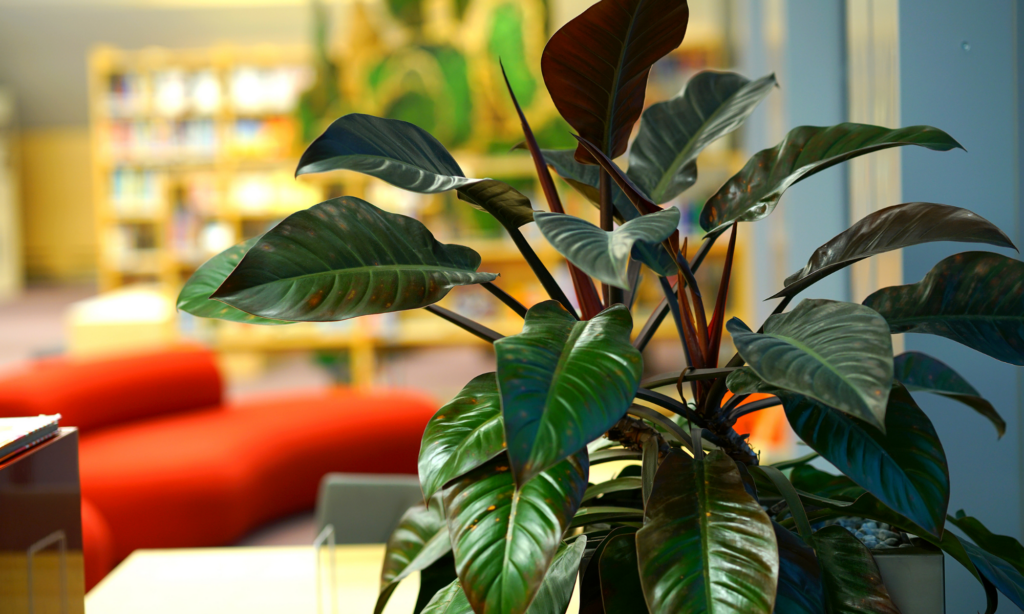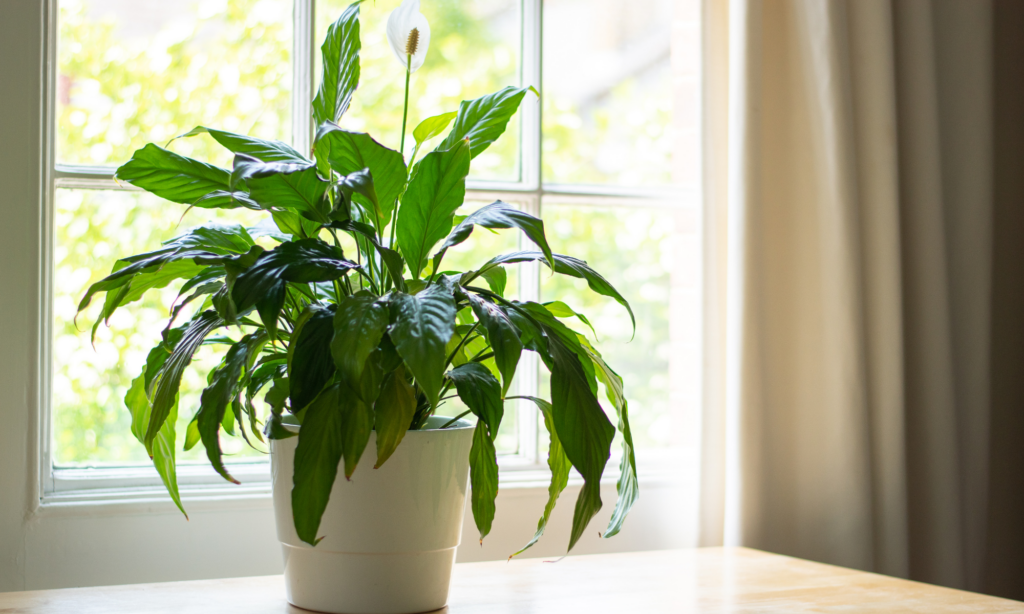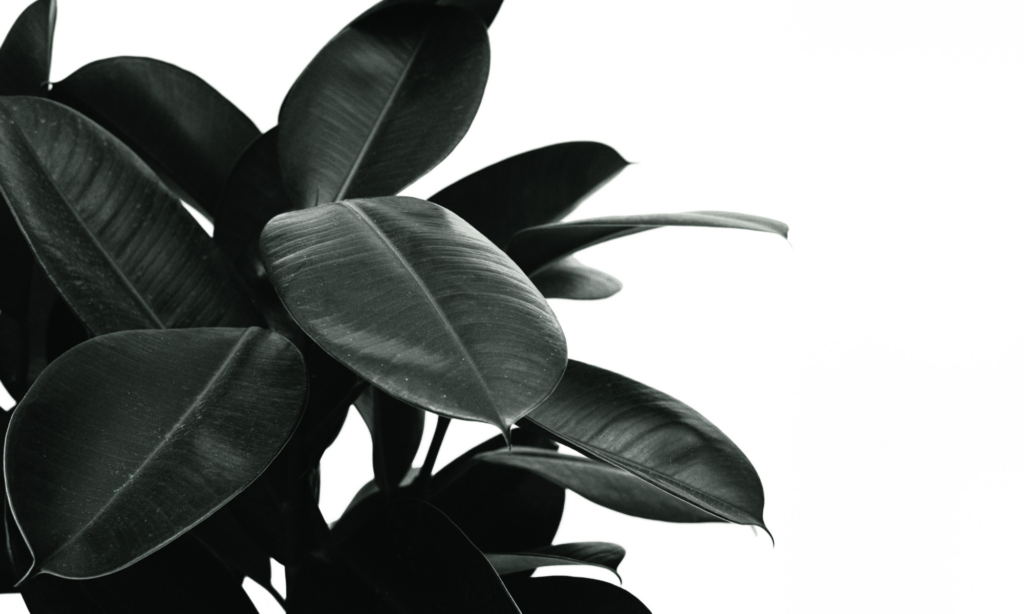Did you know there are indoor plants that clean air and remove toxins from your home? Indoor plants can do more than just liven up a space’s looks. They can actually help clean the air in your home too.
We’re covering our 6 favorite indoor plants that clean air and remove toxins. Each of these plants is beginner friendly, and we’ll cover the care guides for you to get started with each one.
Table of Contents
6 Indoor Plants that Clean Air and Remove Toxins from Your Home
Snake Plant

A snake plant is a good place to start if you’re looking to buy your very first plant. Why? Because they’re nearly impossible to kill. These plants are hearty. They can withstand both overwatering and underwatering (we’re talking you can go up to a month without watering these guys). Its best to air on underwatering these guys, but for the most part they’ll adapt regardless. They also clean the air in your home, and are very unique looking with their snake like pattern on their leaves.
They also adapt well to varying levels of light. They thrive most in medium light levels, but can tolerate a variety of environments.
Snake plants are slower growth plants, meaning you won’t see the most progress with these week over week when comparing it to other indoor plants. If you’re interested in making your snake plant big and strong, best to keep the watering light and medium level light to help them thrive.
Pothos

A pothos plant is another great one to start with if you’re new to gardening. These plants are some of the best at removing toxins and cleaning the air in your home. They’re also easy to care for and fairly resilient.
Pothos love medium to low light and medium levels of watering. Like snake plants, they’re fairly resiliant and will tolerate a wide variety of environments.
Pothos are faster growing than the average plant, which is great for beginner gardeners that want to see progress in their plants. It can be much more satisfying to have a pothos plant that grows significantly week over week, compared to a snake plant that you can barely see growth after a few months.
Philodendron

Philodendron can look very similar to pothos plants (depending on the type), but they are actually two distinct plants. Like a pothos, philodendrons are also great plants to clean the air in your home.
Philodendrons enjoy bright, indirect light, though they can survive in varying light levels. They do enjoy thorough watering’s, and will let you know if they’re thirsty by drooping their leaves. If you see the leaves starting to droop, don’t worry. They’ll perk back up once they’ve had a drink of water.
Red Edged Dracaena

If you’re looking for plants that clean air and remove toxins from your home, look no further than the red edged dracaena. Fun fact about this plant, its on NASA’s top 10 air cleaning plants!
The care for this plant is similar to other indoor plants. It likes bright indirect light, and enjoys being thoroughly watered. The red edged dracaena is fairly drought resistant though, so don’t stress too much over water levels for this plant.
Peace Lily Plant

A peace lily is a favorite indoor plant of ours. Aside from cleaning the air and removing toxins, these plants have unique and beautiful white flowers that will complement your home.
Care for a peace lily is fairly easy, making this plant a good plant for beginners. It will survive in a variety of light levels. If you want your lily to bloom frequently though, we recommend bright indirect light.
Water levels for a peace lily are easy to maintain. Water whenever the top level of soil feels dry. Peace lilies are very drought tolerant, so you could wait until the leaves start to droop to water.
Rubber Plant

Rubber plants are a super interesting indoor plant, their leaves are thick and full of personality. Its probably one of the more difficult plants to care for from this list, but its not as difficult as some people think.
The proper amount of light is key to a rubber plant’s success. It prefers bright indirect light, at a cooler temperature. Water is also important with a rubber plant. Keep the soil thoroughly moist and spritz the leaves with water for an added moisture bonus. If the leaves start to brown and fall off, you’ve likely overwatered your plant.
Interested in more indoor plant guides? Check out all of our articles on indoor plants here!


